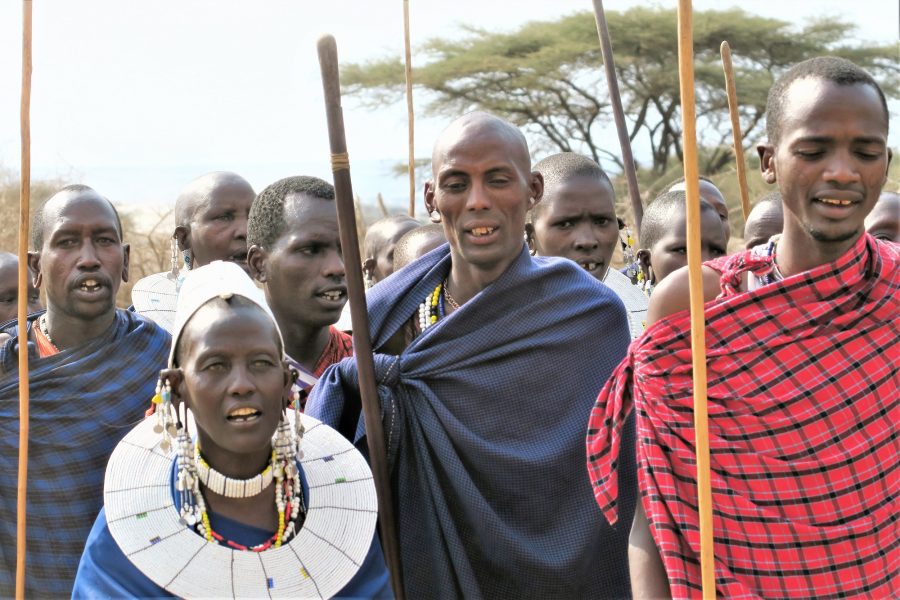We discover the dangerous charm of the Barabaig, tribe of Datoga ethnic, farmers of the plains.
One of the most interesting studies of this fascinating and little-known tribe is that of Charles Lane, an Australian who in the 80s lived two years in a Barabaig family, becoming “one of them”, as much as possible to a white man! Charles Lane fought with the Barabaigs to ensure that they were not deprived of their lands in favor of the development of agriculture. The rights of the Barabaigs have been the subject of bloody conflict, highlighting once again how difficult it is to combine our idea of civilization with the rights of tribal peoples. Charles’ words describe a proud and fierce people, considered a dangerous enemy even by the brave Masai, in which men and women are devoted to a hard working life, with well-defined roles and an organized social structure.
The origins
The Barabaig (literally “men who beat the stick”) are shepherds belonging to the largest ethnic group of the Datoga, migrated from the Nile Valley more than a thousand years ago. They have been present in Tanzania, at the foot of the Great Rift Valley, for at least 150 years. About thirty thousand people still live according to tradition, mainly in the plains at the foot of Mount Hanang, but the most accessible villages for tourists are located near Lake Eyasi, near the Hadzabe.
The culture and the social organisation
The Barabaig, apparently, do not have a lifestyle very different from that of the Masai, although, unlike the latter, they are also blacksmiths and know how to work iron and brass. The Barabaig have a simpler and freer social structure, they do not have the warrior education of the Masai but they have a tradition of ferocity and a past in which they did not disdain cannibalism. Pastoralism is at the center of the Barabaig’s life, as for the Masai: from food to clothing, from utensils to building materials, livestock is all they need, and what little is not obtained from livestock, like “modern” medicines. They get it through barter. The Datoga know the numbers and count the cattle not with a single head but “in pairs”, with a system not decimal but “in base 20”. Agriculture does not belong to the tradition of this originally nomadic people, with the exception of small vegetable gardens grown close to the huts.
The Barabaig, Charles Lane tells us, are very different from us, but they live the same feelings as us, they have loving family relationships and they take care of each other with a spirit of self-denial. Unique among the tribal populations of East Africa, they bury their dead, honoring with a long rite the wisest men (and sometimes even women).
The art of seduction distinguishes the tribal rituals: the girls, agile and with a statuary physique, adorned with brass bracelets and collars, beautiful and elegant in their garments of tanned leather and colored beads, try their hand at sensual dances to conquer the strongest killers. Yes, because the Barabaig men show the community their strength by killing a ferocious animal, which, in ascending order of value, can be a leopard, an elephant, a lion or… a man of an enemy tribe!
The condition of women
The Barabaig have a clear distinction of tasks between men and women. As with the Masai, the women take care of the huts, the food and the care of the children. The condition of women is harsh and unacceptable to our culture, although Charles Lane stresses, even from a point of view that is still masculine, that women are considered and respected; if a man offends a woman, it is a women’s court to judge him: The sentence can reach the “curse” of the offender, which involves the removal and condemnation to a life without home or family.
Barabaig are polygamous and marriages are arranged by their parents, after agreeing on the “price” of the bride. Before marriage, boys and girls must undergo the terrible rite of initiation into adult life, which involves genital mutilation, practiced by women on girls and men on boys. We have no words to describe the reasons for such an unacceptable practice, so we borrow those of Charles Lane:
A Barabaig existence has been so precarious in the past, and remains so, it is absolutely vital for the absolutely vital that everyone fulfils their prescribed roles and responsibilities to ensure survival. Otherwise, the community is put at risk. An unequivocal way of ensuring a girl understands this is by mutilating her in such a way that she never forgets the day she made her transition to womanhood, and is now able to marry, bear children, assume responsibilities for helping sustain the household, and contribute to the maintenance of Barabaig culture. My guess is that this practice will end when the Barabaig enjoy greater security, and women will resist mutilation when they enjoy the benefits of a modern education. Many African women now resist the practice and others are campaigning against it. When the custom eventually dies out, I sense that Barabaig men will happly concede it.
from Barabaig – Life, Love and Death on Tanzania’s Hanang Plains, Charles Lane, River Books, page 151
The whole tribal world brings with it, along with the fascination of a culture that we can define as “original”, the horror of practices incomprehensible and rightly reprehensible to our awareness and culture; mediating is impossible, but helping you can and must: By visiting the tribes, we make our economic contribution to their survival, and by supporting the association of the courageous Rhobi Samwelly Hope for girls and women, we contribute to the activity and struggle to combat mutilation and contain its consequences.



